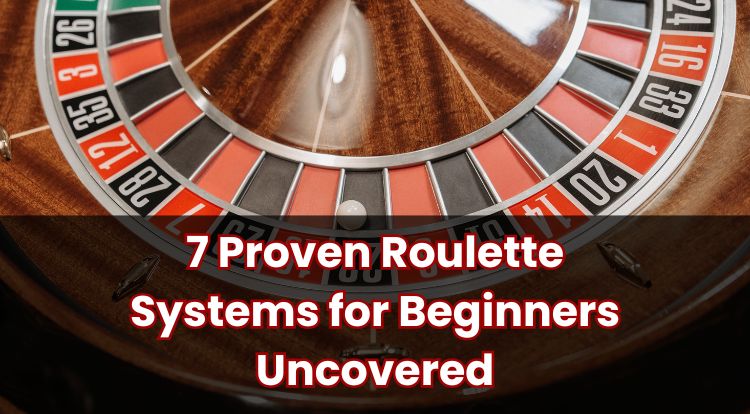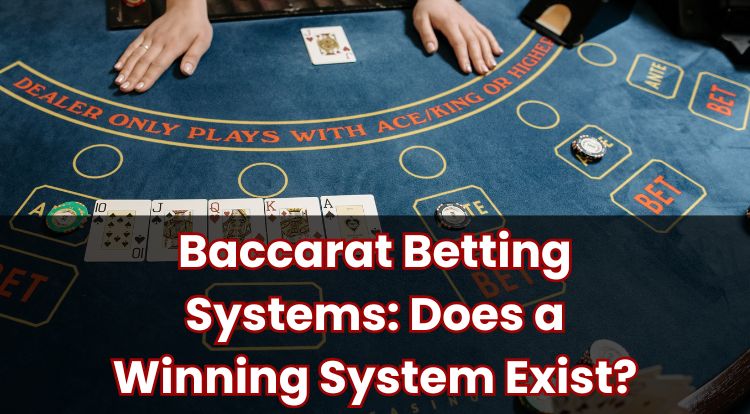How the Fibonacci Sequence Is Used in Roulette Betting
There are many approaches people try if they’re playing roulette, and some of them draw on simple number patterns. One of the best-known is the Fibonacci sequence, which some players use to guide how they adjust stakes.
If you’re curious about how this sequence connects with roulette, why it might be chosen by some players, and what it may influence during play, you’re in the right place.
This blog explains the basic idea behind the Fibonacci sequence, how it may be applied when placing bets, a typical session scenario, and the practical effects it can have on stake management.
Read on to learn more.
What Is the Fibonacci Sequence and How Does It Work?
The Fibonacci sequence is a number pattern where each new number is the sum of the two that came before it. It starts 1, 1, 2, 3, 5, 8, 13, and continues in the same way.
When applied to roulette, it is used to guide the size of stakes rather than to select numbers. The main idea is to follow an organised approach to wagering rather than attempting to influence the inherent probabilities of the game.
Some players prefer to plan their session beforehand, such as defining a budget. The sequence itself does not alter the likelihood of winning, so it should be seen as a method for organising stake amounts rather than a technique to secure outcomes.
How Is the Fibonacci Sequence Applied in Roulette Betting?
When used in roulette, the Fibonacci sequence is usually applied to even-money bets, such as red/black, odd/even, or high/low. These options cover a large portion of the wheel but are not exactly 50-50 due to the single zero on European wheels.
A common approach starts with a small base stake, for example, £1, following the first number in the sequence. If a round does not result in a win, the next stake is increased to the following number: 1, 1, 2, 3, 5, 8, and so on. If a successful round occurs, the stake is generally moved back two numbers.
This forward-after-loss, back-two-after-win rhythm is designed to gradually offset previous stakes. For example, if a player stakes £1 and loses, stakes £1 again and loses, then stakes £2 and wins, the next stake would drop two steps to £1. Over several rounds, a single win may cover multiple previous bets, but a series of unsuccessful rounds can make the next stakes rise quickly.
If you’re considering using the Fibonacci system to manage your betting approach during a game of roulette, it’s essential to keep in mind that this system, nor any others, can guarantee outcomes.
This approach provides a way to adjust stake amounts, though higher figures may reach table limits or exceed a planned budget. Keeping a record of the numbers and pausing if stakes increase significantly can help maintain oversight.
Can the Fibonacci System Beat the House Edge?
Roulette has an in-built advantage because potential payouts do not exactly match probabilities. On a European wheel, successful even-money bets typically pay 1:1 but win on 18 of 37 pockets, giving a house edge of 2.70%. No pattern of stakes can alter these fundamental chances.
The Fibonacci approach modifies the amount wagered rather than the expected outcome of any spin. Over many rounds, the expected result is the same as if each bet were of equal size. Table limits and budget size are also factors because consecutive losses may require stake levels that cannot be placed or do not align with a pre-defined plan.
Some players choose this sequence because it provides a clear method to change stakes up or down. It can help keep a session organised, but as we’ve already mentioned, it does not improve the probability of winning.
How Do You Start a Fibonacci Roulette Session?
A session using the Fibonacci sequence usually begins by selecting a base stake that fits comfortably within a personal budget, for instance, £1. Bets are placed on an even-money option, such as red or even. Stakes then follow the pattern described earlier: one step forward after an unsuccessful round, if one occurs, two steps back after a successful round, if one occurs.
Some players find it useful to note the sequence on paper or on-screen to track progress. Defining a maximum stake and a stopping point, whether based on time or total amount staked, provides a clear framework for the session. Some also set a modest target to guide when to finish, rather than chasing results.
Taking breaks and keeping a steady pace helps maintain focus. The focus is on following the sequence for stake sizing rather than expecting predictable outcomes.
It is important to set limits on both time and money before starting and to stick to them throughout a session. Only gamble with funds you can afford to part with, and avoid chasing losses or attempting to recover previous stakes.
If you notice that gambling is causing stress, frustration, or disruption to daily life, it may be helpful to pause and seek support from organisations such as BeGambleAware.
Remember that roulette is a game of chance. Maintaining a responsible approach should prioritise enjoyment and self-awareness rather than attempting to achieve specific results.
Play Roulette Online at Red Casino
At Red Casino, you can explore both Random Number Generator (RNG) roulette and live dealer tables. RNG games let you enjoy fast digital spins, while live tables stream real wheels with professional dealers for a more interactive experience.
We are licensed and regulated by the UK Gambling Commission (UKGC), and all our games meet strict standards for fairness and player protection. You will also find a range of responsible gambling tools, including deposit limits, time reminders, and easy access to support if needed.
If you want to try roulette at Red Casino, feel free to create an account, add funds securely, and explore the tables at your own pace. Make sure you set limits before you begin and keep to them so you can focus on enjoying the experience rather than chasing results.
**The information provided in this blog is intended for educational purposes and should not be construed as betting advice or a guarantee of success. Always gamble responsibly.




